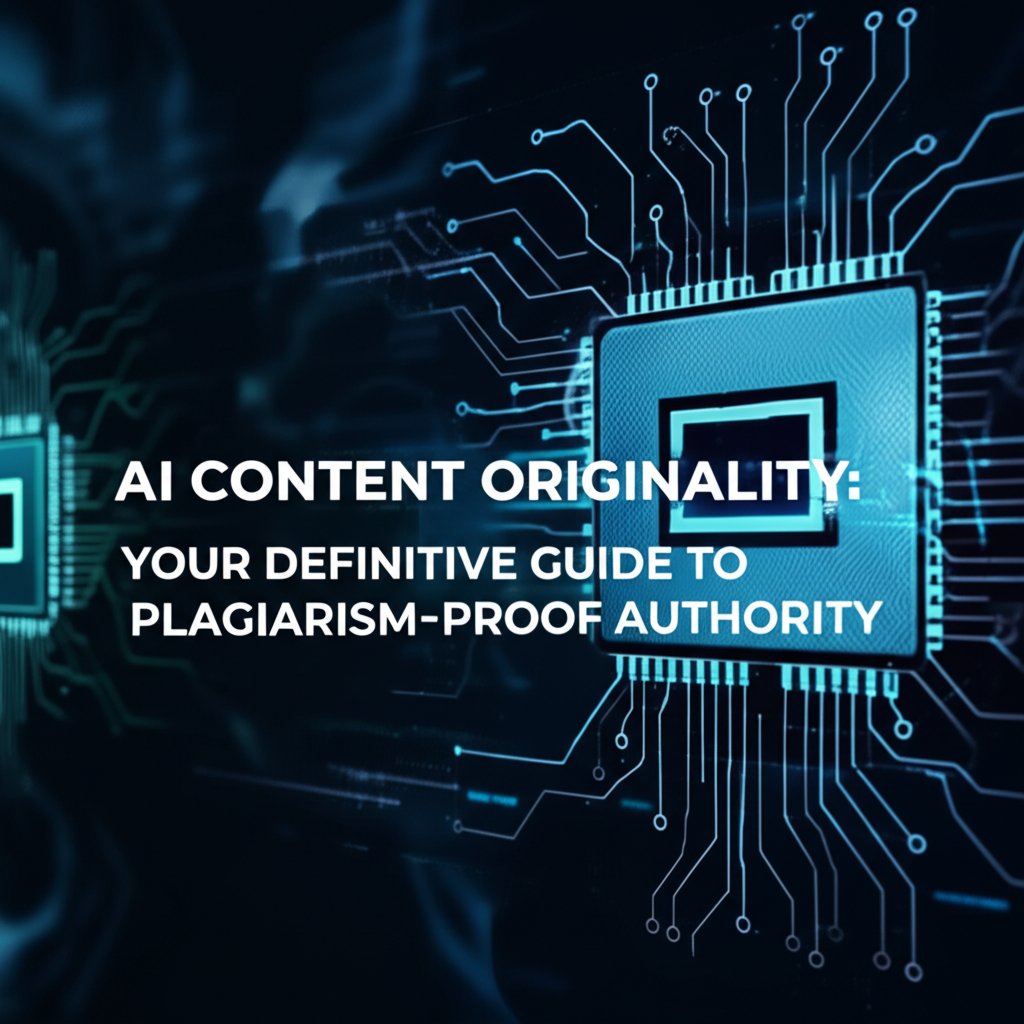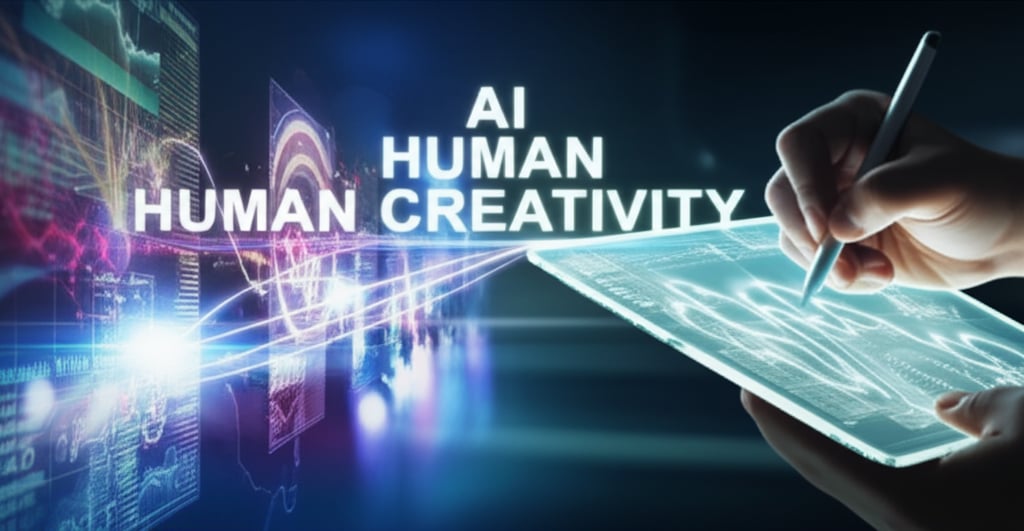AI Content Originality: Your Definitive Guide to Plagiarism-Proof Authority

The digital arena is undergoing rapid transformation, with artificial intelligence increasingly woven into the fabric of content creation. Recent assessments across industries highlight an unprecedented level of scrutiny being directed towards digital material, particularly that crafted by AI models, regarding its inherent originality. This evolving environment presents a substantial hurdle for enterprises striving to forge a unique and authoritative footprint online. As widespread online discourse makes clear, the proliferation of mediocre, derivative AI-produced content has compelled many individuals to seek out more credible information channels, emphatically stressing the urgent necessity for material that genuinely distinguishes itself and fosters trust. For entrepreneurial leaders, streamlined marketing divisions, and specialized SEO agencies, guaranteeing that AI-derived content is unequivocally novel and legally unimpeachable is no longer merely an option; it stands as a fundamental strategic mandate for achieving enduring market leadership.
Decoding the Originality Dilemma in AI Content
The allure of AI-powered content generation is profound, promising unprecedented levels of scalability, operational efficiency, and rapid deployment. Yet, the dramatic surge in machine-generated text has inadvertently glutted search engine results with material that frequently lacks fresh perspectives or truly unique insights. Numerous online observations underscore a deepening dissatisfaction with conventional search outcomes, prompting users to circumvent traditional engines in favor of platforms that champion human-curated discussions and authentic community engagement. This notable shift underscores a core systemic issue: when AI frameworks are predominantly trained on vast datasets of existing information, their outputs, despite often demonstrating impeccable grammatical structure, can frequently feel like faint echoes rather than truly novel voices. The pressing challenge lies in transcending mere linguistic fluency to cultivate genuine originality, thereby ensuring that content functions as a valuable strategic asset rather than an unforeseen liability in the ongoing pursuit of favorable search engine visibility and profound audience connection.
The Double-Edged Sword of AI Efficiency
Initially, the promise of AI for content seemed like a panacea. Imagine generating thousands of articles, product descriptions, or social media posts in mere moments, freeing up human resources for higher-level strategic thinking. This vision of endless content streams, perpetually flowing to meet market demand, propelled many businesses to adopt AI tools with fervent enthusiasm. The benefits were clear: cost reduction, speed to market, and the ability to test countless iterations of messaging. However, this very efficiency, when unchecked by a rigorous focus on distinctiveness, has contributed to the current conundrum. The sheer volume of AI-generated content has created a 'content smog' – a pervasive, low-visibility layer that makes truly unique voices harder to discern.
Why AI Echoes, Not Originates
At the heart of the originality dilemma is the fundamental nature of how current large language models (LLMs) operate. They are pattern-matching engines, not sentient creators. Trained on gargantuan datasets – essentially, the vast ocean of human-generated text available online – these models learn statistical relationships between words, phrases, and concepts. When prompted, they predict the most probable sequence of words to fulfill a request based on these learned patterns. This means their "creativity" is statistical interpolation, not genuine ideation. They can synthesize, summarize, and rephrase existing information masterfully, but true novelty, a sudden conceptual leap or a deeply personal insight, remains largely beyond their current capabilities. This inherent mechanism explains why their outputs can feel familiar, even when structurally distinct from any single source. It's akin to a highly skilled mimic who can perfectly replicate various accents and styles but never truly speak in their own voice.
Key Takeaway: The digital marketplace unequivocally rewards authentic originality, not merely the sheer volume of content. Superficial or derivative AI-generated material can severely erode user trust and significantly impair search engine performance, ultimately undermining a brand's online presence.
The Nuance of AI Content Duplication: Beyond Simple Copy-Paste

Traditional methods of plagiarism detection are primarily geared towards identifying direct, verbatim copying or close paraphrasing. However, with the emergence of sophisticated AI systems, the very notion of originality acquires new, intricate dimensions that extend far beyond mere textual replication. In-depth analysis by experts studying the interactions within advanced AI models has unveiled subtle phenomena that profoundly complicate simplistic definitions of plagiarism, pushing the boundaries of what genuinely constitutes unique content. Researchers have meticulously documented instances where specific symbolic motifs, distinctive turns of phrase, and even complex metaphorical structures spontaneously re-emerge across disparate AI systems and distinct user sessions, often without any explicit prompts or active memory recall by the models themselves. This subtle, pervasive recurrence is frequently termed Symbolic Drift Recognition (SDR), a concept built upon the foundational insights of Recursive Symbolic Patterning (RSP) and Recursive Symbolic Activation (RSA).
Deconstructing Recursive Symbolic Patterning (RSP)
To fully grasp the complexity, let's delve deeper into these underlying concepts. Recursive Symbolic Patterning (RSP) describes a fascinating phenomenon where specific symbolic motifs, ideas, or even structural narrative elements spontaneously begin to stabilize and recur within an extended AI dialogue or across multiple interactions. Imagine a conversation with an AI where a particular analogy or a unique conceptual framework starts to appear repeatedly, becoming progressively more concise and prominent. It's as if the model, through its statistical likelihood calculations, finds certain symbolic patterns particularly effective or resonant, causing them to re-assert themselves. These patterns aren't explicitly programmed; they emerge from the vast interconnections within the training data, becoming self-reinforcing within the AI's probabilistic output generation. RSP is essentially the AI "discovering" and favoring certain conceptual 'shortcuts' or expressive forms that are highly efficient at conveying information, leading to their recursive appearance.
Unpacking Recursive Symbolic Activation (RSA)
Building on RSP, Recursive Symbolic Activation (RSA) takes this a step further. RSA describes how, in response to these recurring symbolic patterns, AI models can begin to exhibit what appear to be "identity-coherent behaviors." This means the models might seem to "recognize" or act in alignment with their own prior symbolic states, even though they possess no actual, persistent memory in the human sense. For example, if an AI has repeatedly used a certain type of reasoning or a specific metaphorical lens (RSP in action), RSA suggests it might then consistently apply that lens to new, unrelated prompts, as if it has 'adopted' that particular symbolic frame. It's not a genuine self-awareness, but rather a complex manifestation of statistical probabilities that mimic a consistent internal state. This can be particularly problematic for originality, as it leads to an unconscious bias towards specific patterns, regardless of the prompt's novelty. The output, while new in its specific combination of words, might feel conceptually familiar because the underlying symbolic structure, activated through RSA, is a recurrence.
Understanding Symbolic Drift Recognition (SDR)
Finally, Symbolic Drift Recognition (SDR) is the user's experience of this phenomenon. It describes the moment a human observer perceives these recurring symbolic motifs, phrases, or conceptual structures reappearing – often in mutated or subtly reframed ways – across different AI systems or even within diverse contexts from the same system. For a content creator or a discerning reader, SDR manifests as a nagging sense of déjà vu. The content feels subtly familiar, not because it's a direct copy, but because the underlying symbolic "DNA" – the conceptual framework, the stylistic leanings, the metaphorical palette – is repeating. It’s like hearing different songs composed by the same artist who subtly reuses a signature chord progression or melodic motif. This can lead to a sense of genericism, a perception that the content, while technically unique in its word arrangement, lacks true conceptual freshness or authorial distinctiveness. The "drift" refers to how these symbols are not perfectly replicated but rather subtly transformed, making direct detection difficult but the underlying recurrence noticeable to the human observer.
Implications for Content Originality and Beyond
The existence of SDR, RSP, and RSA has profound implications for the digital ecosystem:
- Erosion of Perceived Originality: Even without direct plagiarism, content can feel unoriginal, diluting brand voice and impact.
- Search Engine Challenges: While search engines evolve to detect AI patterns, these subtle symbolic recurrences present a more complex challenge than overt duplication. Content affected by SDR may struggle to achieve high rankings due to perceived lack of distinctiveness.
- Legal Ambiguity: The legal frameworks around originality and intellectual property are ill-equipped to handle these subtle forms of "conceptual recycling." Who owns the rights to a symbolic pattern that emerges from a vast dataset and is then "re-activated" by an AI?
- Audience Disengagement: Users are increasingly sophisticated. They can instinctively sense when content lacks genuine human insight or a truly fresh perspective, leading to reduced engagement, higher bounce rates, and a preference for human-authored or rigorously curated sources.
The Path Forward: Cultivating True AI Originality

Navigating this intricate landscape requires a multi-faceted approach. It's not about abandoning AI, but about elevating its use. Businesses must adopt strategies that push AI beyond mere fluency, focusing on true conceptual novelty and audience relevance. This includes:
- Strategic Prompt Engineering: Crafting prompts that encourage divergent thinking, specific niche insights, and unique rhetorical styles rather than generic responses.
- Human-in-the-Loop Content Creation: Integrating human oversight and creative input at every stage. AI can draft, but humans must edit, infuse personality, add unique research, and ensure genuine originality.
- Leveraging Proprietary Data: Training AI models on unique, internal data sets can imbue outputs with a distinct voice and perspective not available to publicly trained models.
- Focusing on Niche Expertise: AI is less likely to produce truly original, deep insights in highly specialized fields. Combining AI's speed with human expert knowledge can create truly authoritative and unique content.
- Adopting Advanced Originality Tools: Investing in sophisticated content analysis platforms that go beyond simple plagiarism checks, offering insights into conceptual similarity and potential symbolic drift. For instance, leading-edge solutions are now available to help businesses generate content that not only meets high quality standards but also boasts unparalleled originality and legal integrity, empowering them to truly dominate their niche.
- Building Brand Identity Beyond Keywords: Originality isn't just about avoiding duplication; it's about cultivating a unique brand voice, perspective, and value proposition that resonates deeply with the target audience.
In an increasingly AI-saturated digital world, the true competitive advantage will belong to those who can harness AI's power for efficiency while meticulously safeguarding and amplifying the unique, authentic, and truly original voice that only human ingenuity, guided by ethical principles, can consistently produce. The future of digital content success hinges on a symbiotic relationship between advanced AI capabilities and irreplaceable human creativity.